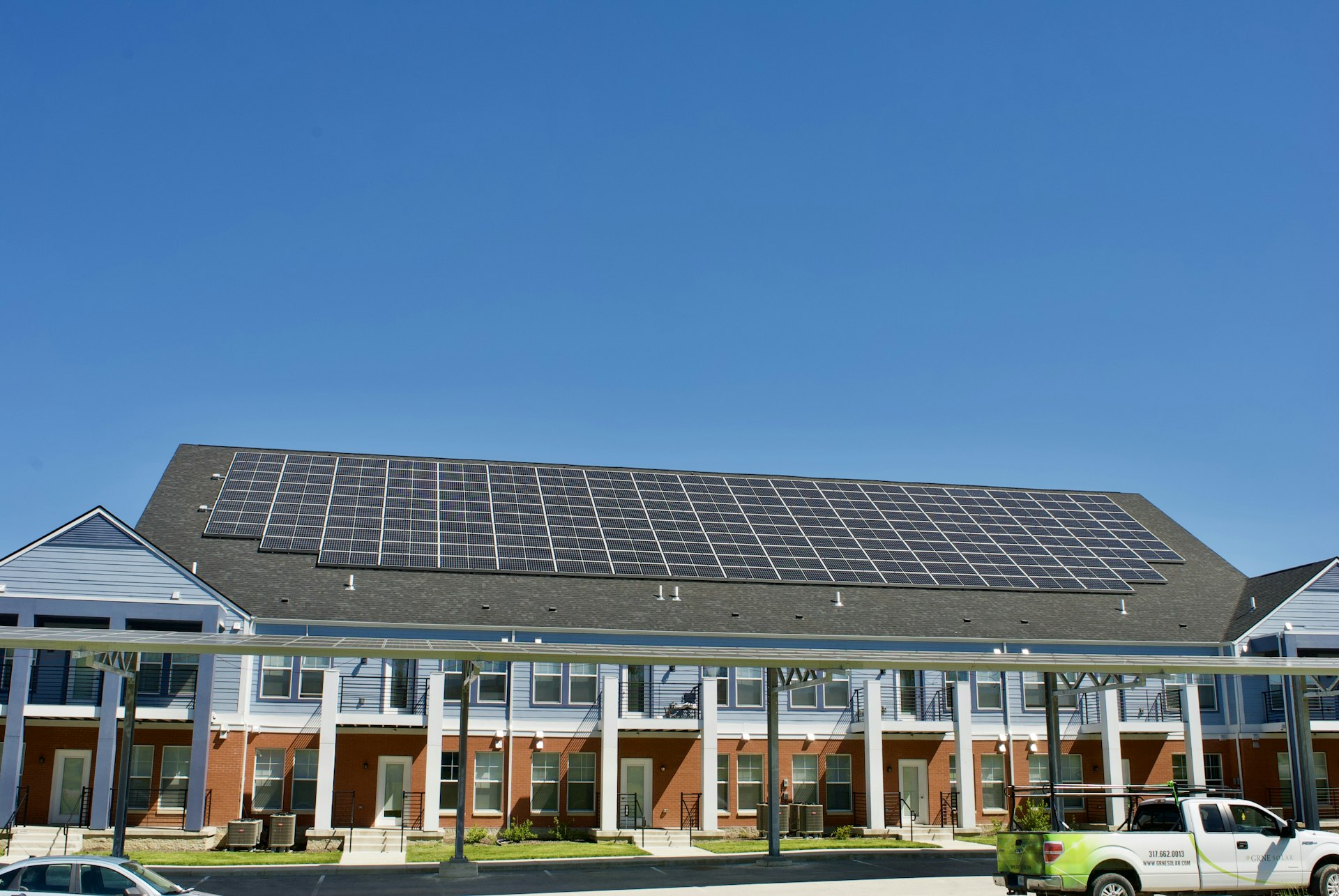Unlocking Value: Commercial Real Estate Opportunities in the Renewable Energy Sector


Photo by Jubbar J. on Unsplash
Introduction: The Intersection of Commercial Real Estate and Renewable Energy
Commercial real estate (CRE) has entered a transformative era, where sustainability and energy efficiency are no longer optional but fundamental to long-term value creation. The drive toward renewable energy is reshaping how property owners, investors, and tenants approach building operations, asset management, and profitability. Today, integrating renewable solutions like solar, wind, and energy storage into commercial buildings is recognized as a strategic investment, offering both financial and environmental rewards [1] .
Why Renewable Energy Matters in Commercial Real Estate
CRE properties are major energy consumers, accounting for a significant share of national energy use and carbon emissions. Traditional dependence on fossil fuels has led to high operational costs and growing scrutiny of environmental impact. With increasing pressure from regulators, investors, and tenants, sustainable building practices are becoming standard industry expectations. Renewable energy adoption in CRE delivers key benefits:
- Cost Savings : Lower utility bills through self-generated energy and optimized building systems.
- Market Appeal : Properties with green credentials attract environmentally-conscious tenants and buyers.
- Government Incentives : Access to tax credits, rebates, and financial support for renewable upgrades.
- Environmental Impact : Reduces carbon footprint and supports climate goals [1] .
Recent industry research shows that green buildings can cut energy use by up to 30% and waste by up to 90%, making them more attractive to tenants and investors [1] .
Key Renewable Energy Solutions for CRE
Rooftop Solar
Rooftop solar remains the fastest-growing renewable energy application in commercial real estate. By harnessing unused roof space, property owners can generate on-site electricity, stabilize energy costs, and even earn new revenue streams. According to NAIOP, commercial rooftop solar provides more value than rural solar farms by delivering power where it’s needed, reducing transmission losses and grid strain [2] . Real Estate Investment Trusts (REITs), for example, control over 38.5 billion square feet of roof space in the U.S.-an enormous opportunity for solar installations [2] .
Case studies highlight how CRE owners can lease rooftop space to solar developers, generating ancillary income without major investment. National Storage Affiliates Trust, for instance, partnered with Solar Landscape to develop 100 megawatts of rooftop solar across its properties, creating sustainable revenue and supporting grid resilience [2] .
Battery Storage and Energy Management
Battery storage systems complement renewables by storing excess energy for use during peak demand or outages. These solutions improve grid reliability and provide resilience for tenants, especially those with critical operations. Advanced energy management platforms allow owners to monitor consumption, optimize efficiency, and participate in demand-response programs for additional revenue [4] .
Electric Vehicle (EV) Charging and Solar Carports
Installing EV charging stations and solar carports encourages sustainable transportation, enhances property amenities, and appeals to forward-thinking tenants. These features can serve as differentiators in competitive leasing markets and may qualify for additional incentives [3] .
Financial and Regulatory Incentives
Government initiatives at federal, state, and local levels offer robust financial incentives for CRE owners integrating renewable energy. The most prominent program is the federal Investment Tax Credit (ITC) , which enables owners to offset up to 30% of solar installation costs. Combined with state rebates and accelerated depreciation, up to 80% of project costs may be recoverable in certain markets [5] .
To access these benefits, CRE owners should:
- Consult with licensed energy consultants or attorneys familiar with renewable energy incentives.
- Visit the official Internal Revenue Service (IRS) website and search for ‘Investment Tax Credit’ for eligibility details.
- Explore state energy agencies and utility providers for additional rebates and incentive programs.
It is important to verify eligibility and consult professionals to maximize financial returns on renewable investments.
Implementation Pathways: Step-by-Step Guidance
Integrating renewable energy into commercial real estate can follow several pathways, each requiring a tailored approach.
- Conduct an Energy Audit Begin by assessing current energy use, efficiency opportunities, and roof or land suitability for installations. Professional energy audits help identify areas for improvement and prioritize investments.
- Evaluate Renewable Options Consider solar PV, battery storage, wind, and geothermal based on property type, location, and budget. Factor in tenant needs and market trends.
- Engage Qualified Partners Work with licensed solar developers, energy consultants, and legal advisors to design, finance, and implement projects. Ensure compliance with local regulations.
- Apply for Incentives Research federal, state, and utility incentives. Prepare documentation, coordinate with partners, and submit applications in a timely manner.
- Monitor and Optimize Leverage energy management platforms to track performance, optimize savings, and identify additional opportunities for improvement.
CRE owners can also monetize distributed energy resources by participating in demand-side energy management programs. These allow buildings with backup generators, solar PV, or storage to earn revenue by supporting grid stability [4] .
Challenges and Solutions
While the benefits are clear, some obstacles remain:
- Upfront Costs : Initial investment in renewable systems can be significant. Solutions include leveraging incentives, third-party financing, or power purchase agreements (PPAs).
- Regulatory Complexity : Navigating incentive programs and compliance can be daunting. Engaging experienced consultants and legal advisors is recommended.
- Tenant Coordination : Aligning tenant interests and lease terms with sustainability upgrades may require negotiation. Clear communication and shared benefits are key.
- Technology Integration : Ensuring compatibility with existing infrastructure and future upgrades is essential. Choose scalable, proven solutions and reliable vendors.
Alternative approaches may include phased implementation, starting with lower-cost upgrades such as LED lighting and building controls before advancing to full renewable installations.
Real-World Examples and Case Studies
Many leading CRE firms have embraced renewable energy, setting valuable precedents for the industry. For example, National Storage Affiliates Trust’s partnership with Solar Landscape is scaling rooftop solar across millions of square feet, generating income and supporting community energy needs [2] . Universities and hospitals are also investing in solar carports and battery storage to power large campuses sustainably [3] .
How to Access Opportunities in the Sector
If you are a property owner, developer, or investor interested in integrating renewable energy into your commercial real estate portfolio, follow these steps:

Photo by Uitbundig on Unsplash
- Search for licensed energy consultants and solar developers in your region using reputable business directories or industry association websites.
- Consult the U.S. Department of Energy’s official website for guidance on renewable energy programs and technologies.
- Contact your state’s energy office or utility provider for details on local incentives and technical support.
- Engage with sustainability-focused property management firms for strategic planning and implementation.
Direct outreach to professional associations such as NAIOP or the Urban Land Institute can provide networking opportunities and access to best practices.
Key Takeaways
Commercial real estate is at the forefront of the renewable energy revolution. By embracing sustainable energy solutions, property owners can unlock new revenue streams, reduce costs, and future-proof their assets. With comprehensive planning, the right partners, and leveraging available incentives, CRE stakeholders can maximize both financial and environmental returns while positioning their properties for long-term success.
References
- [1] Blue & Green Tomorrow (2024). The Role of Renewable Energy in Commercial Real Estate.
- [2] NAIOP Magazine (2025). Commercial Rooftop Solar: Tackling America’s Energy Crisis.
- [3] LandApp (2024). Why Commercial Buildings Should Go Renewable: A Strategic Shift.
- [4] CPower Energy (2024). Commercial Real Estate Guide.
- [5] Sunridge Legal (2024). Solar Energy & Commercial Real Estate.






